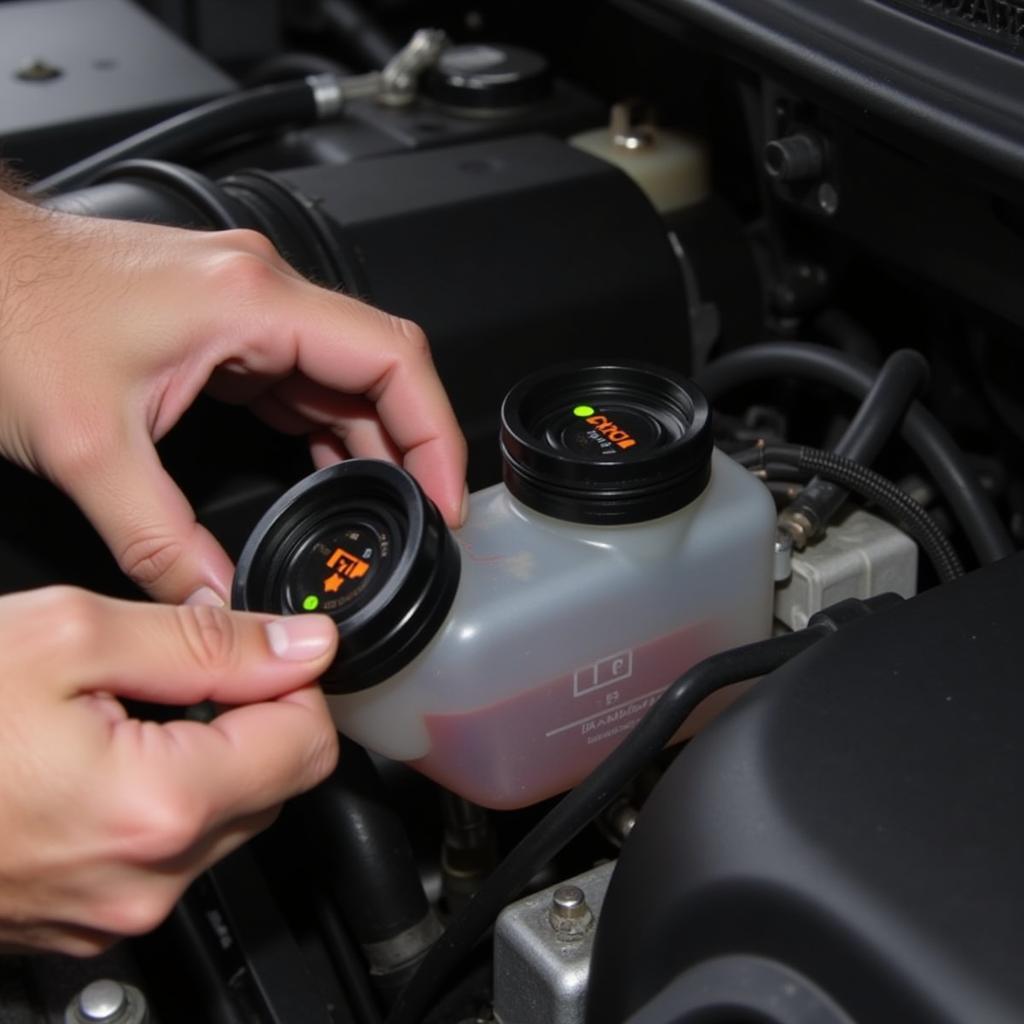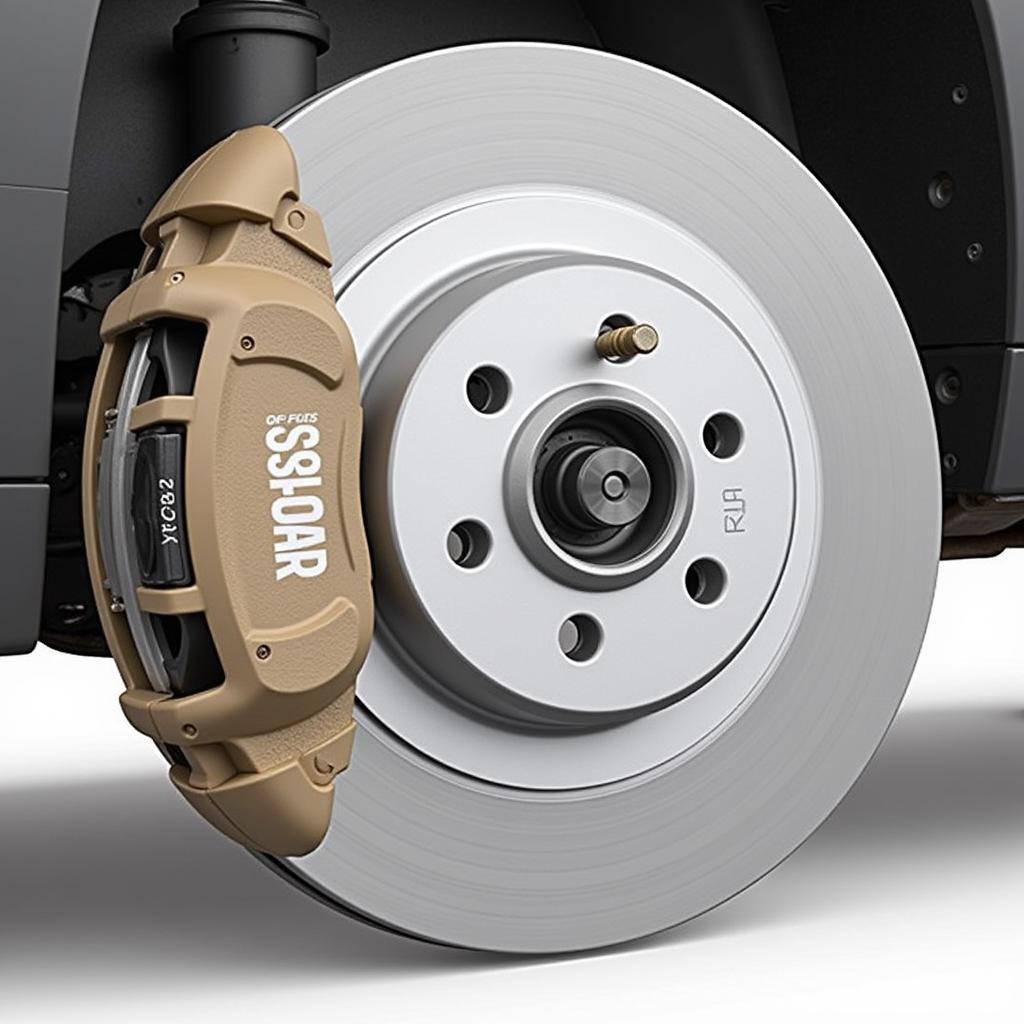The brake warning light on your dashboard is a crucial safety feature, and when it illuminates in your 2008 GMC Acadia, it’s important to address the issue promptly. This light can signal various problems, from low brake fluid to more serious concerns like a failing brake system component. This comprehensive guide will walk you through the common causes of a 2008 GMC Acadia brake warning light and provide potential solutions to help you get back on the road safely.
Understanding Your Brake Warning Light
The brake warning light in your 2008 GMC Acadia typically appears as a red circle with an exclamation point (!) inside, or the word “BRAKE.” When illuminated, it indicates a potential issue with your vehicle’s braking system. Ignoring this warning light can be dangerous, as it may compromise your ability to stop effectively.
Common Causes of a 2008 GMC Acadia Brake Warning Light
Several factors can trigger the brake warning light in your 2008 Acadia. Here are some of the most common culprits:
1. Low Brake Fluid
One of the most common and straightforward causes is low brake fluid. Brake fluid is essential for transferring hydraulic pressure from the brake pedal to the wheels, enabling your vehicle to stop. Over time, brake fluid levels can naturally decrease as brake pads wear down.
Solution: If you suspect low brake fluid, park your Acadia on a level surface and check the brake fluid reservoir under the hood. Consult your owner’s manual for the location and recommended fluid type. If the fluid level is low, carefully add the appropriate brake fluid until it reaches the “MAX” line.
 Checking Brake Fluid Level in a 2008 GMC Acadia
Checking Brake Fluid Level in a 2008 GMC Acadia
2. Worn Brake Pads
Brake pads are designed to wear down over time as they generate friction to stop your vehicle. When the brake pad material reaches a certain minimum thickness, the brake warning light will illuminate to alert you that it’s time for a replacement.
Solution: If your Acadia’s brake pads are worn, you’ll need to have them replaced by a qualified mechanic. Driving with worn brake pads can severely reduce your braking efficiency and potentially damage the brake rotors, leading to costly repairs.
3. Faulty Brake Sensor
Modern vehicles, including the 2008 GMC Acadia, often have a brake pad wear sensor. This sensor is typically a small wire embedded within the brake pad material. When the brake pads wear down to a specific point, the sensor wire makes contact with the rotor, completing a circuit that triggers the brake warning light.
Solution: If your brake sensor is faulty, it will need to be replaced. A mechanic can diagnose this issue and perform the necessary repair.
 Brake Pad Wear Sensor on a 2008 GMC Acadia
Brake Pad Wear Sensor on a 2008 GMC Acadia
4. ABS System Malfunction
The Anti-lock Braking System (ABS) is a safety feature that prevents wheel lockup during hard braking. If your 2008 Acadia’s ABS system experiences a malfunction, it can trigger the brake warning light. This can be due to a faulty ABS module, wheel speed sensor, or other related components.
Solution: Diagnosing and repairing ABS system issues typically requires specialized tools and knowledge. It’s best to consult with a qualified mechanic or dealership for proper diagnosis and repair.
5. Brake Line Leak
A leak in the brake lines, hoses, or connections can also cause a loss of brake fluid pressure, leading to the illumination of the brake warning light. Brake fluid leaks are a serious safety concern and require immediate attention.
Solution: Inspect the brake lines and connections under your 2008 Acadia for any signs of leaks, such as wet spots or drips. If you suspect a brake line leak, it’s crucial to have your vehicle towed to a qualified mechanic or dealership for immediate repair.
Conclusion
A glowing brake warning light in your 2008 GMC Acadia is a serious safety concern that should never be ignored. By understanding the common causes and potential solutions, you can address the issue promptly and ensure your safety on the road. Remember, if you’re unsure about the cause of the warning light or how to address it, it’s always best to consult with a qualified mechanic or dealership for professional assistance.

